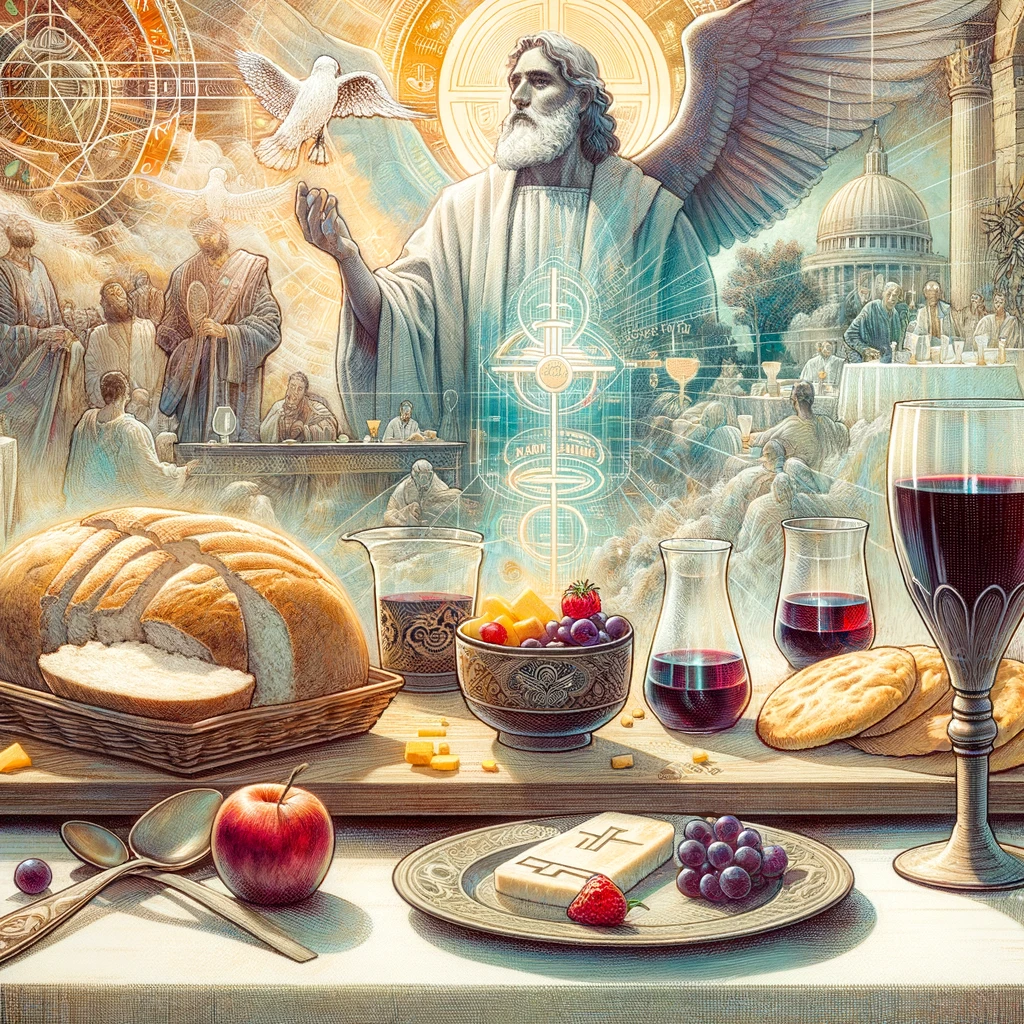
The Divine Exchange: Communion's Message of Death and Life
January 25

In the pages of Genesis, we find a remarkable story of Joseph, a man chosen by God to interpret dreams in the courts of a powerful king. Among his many interpretations, one particular episode stands out, the dreams of the wine bearer and the chief baker. These dreams, though seemingly parallel, took vastly different turns in their outcomes—one leading to life, and the other to death.
As I delved into the this story, I couldn't help but draw a profound connection between it and the Lord's Supper. The story of Joseph mirrors the essence of communion, where we partake in the body and blood of Christ. Both stories revolve around the themes of life, death, offering us a deeper understanding of the spiritual significance of communion.
The bread in communion symbolizes the body of Christ, broken for us on the cross. It is a representation of death—a poignant reminder that through His sacrifice, we die to our sins, sickness, and the burdens that afflict us (1 Corinthians 11:24). Just as Joseph's interpretation of the chief bakers’s dream dealt with death, so too does the bread in Communion take our burdens and sins to the cross, declaring them as dead and done.
Now, consider the wine in the dream of the cupbearer, which, I believe, symbolizes the blood of the Lamb, Christ's blood shed for our redemption and life. Scripture tells us that life is in the blood (Leviticus 17:11), and indeed, the blood carries the life-giving power. When we partake of the wine in communion, we are acknowledging the resurrection power of Christ's blood. We are acknowledging life and restoration for ourselves just as the cupbearer was restored and his life soared. We say, "Thank you for life, for forgiveness, and for the power of your blood that grants life."
Just as Christ did not remain in death but rose again on the third day, we rise to a newness of life through communion. Sickness and disease are nailed to the cross, receiving a death penalty, and we receive healing through the life-giving power of the blood (1 Peter 2:24). In essence, communion becomes a powerful tool in dealing with the challenges life throws our way. The bread signifies the death of our circumstances, while the wine, the blood of the Lamb, symbolizes life. Through this sacred act, we exchange sickness for health, poverty for prosperity, and foolishness for wisdom.
As we contemplate the chief baker's fate, impaled on a pole, it is reminiscent of Jesus' crucifixion on the cross (Matthew 27:35). Jesus sacrifice and the shedding of His blood were not in vain; they paved the way for us to have life, and life more abundantly. His resurrection, fueled by the power of the Holy Spirit, conquered death itself (Romans 8:11). This powerful imagery is not just a historical account but a living reality for us today. Communion, the Lord's Supper, offers us the opportunity to partake of this divine exchange. We can lay our burdens, our troubles, and our brokenness at the foot of the cross, trusting in the death and resurrection of our Savior.
In conclusion, the story of Joseph's interpretations of the dreams of the cupbearer and the chief baker, and the symbolism of communion teach us that life and death are intertwined in the fabric of our faith. Through communion, we embrace the death of our sin and struggles in the bread, and the life-giving power of Christ's blood. It is a reminder that as we partake, we are participating in the victory over death achieved by the life of our Lord and Savior, Jesus Christ.
Copyright ©️ 2023 sellcasa.com